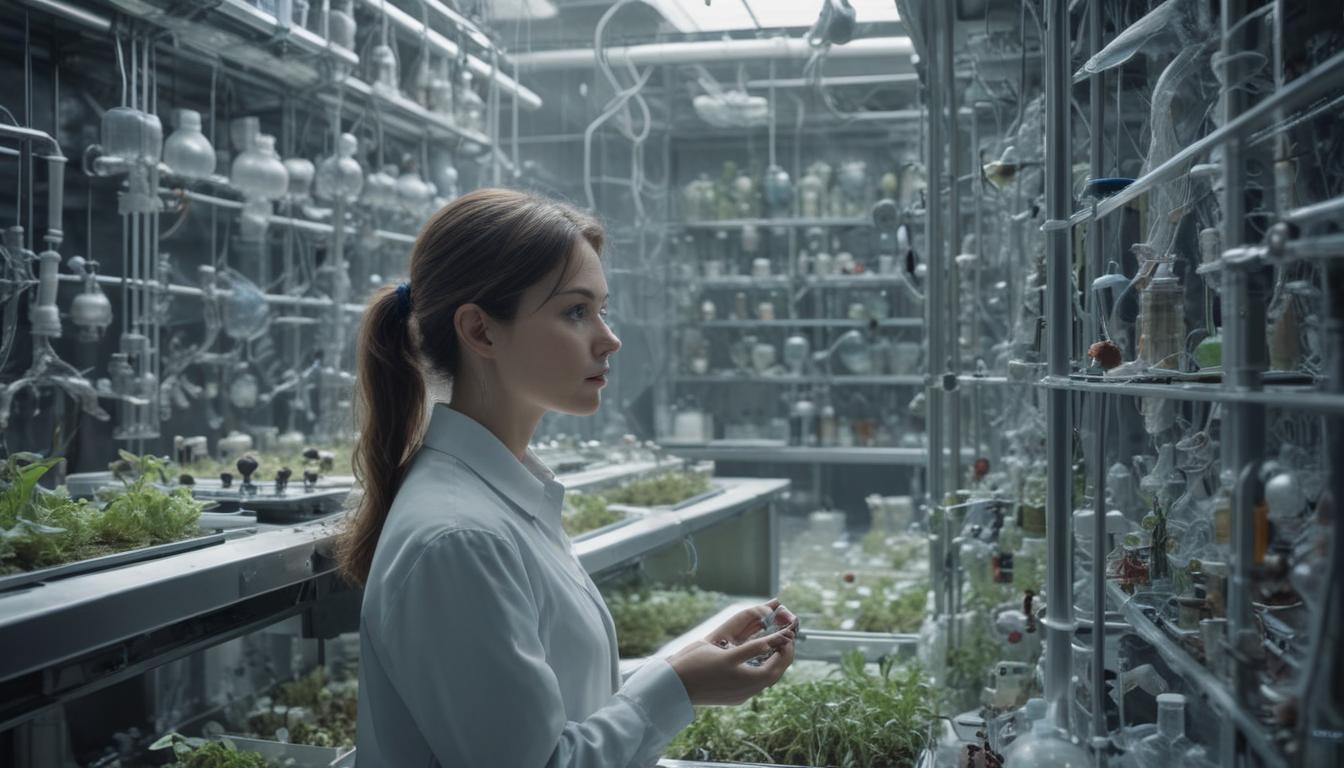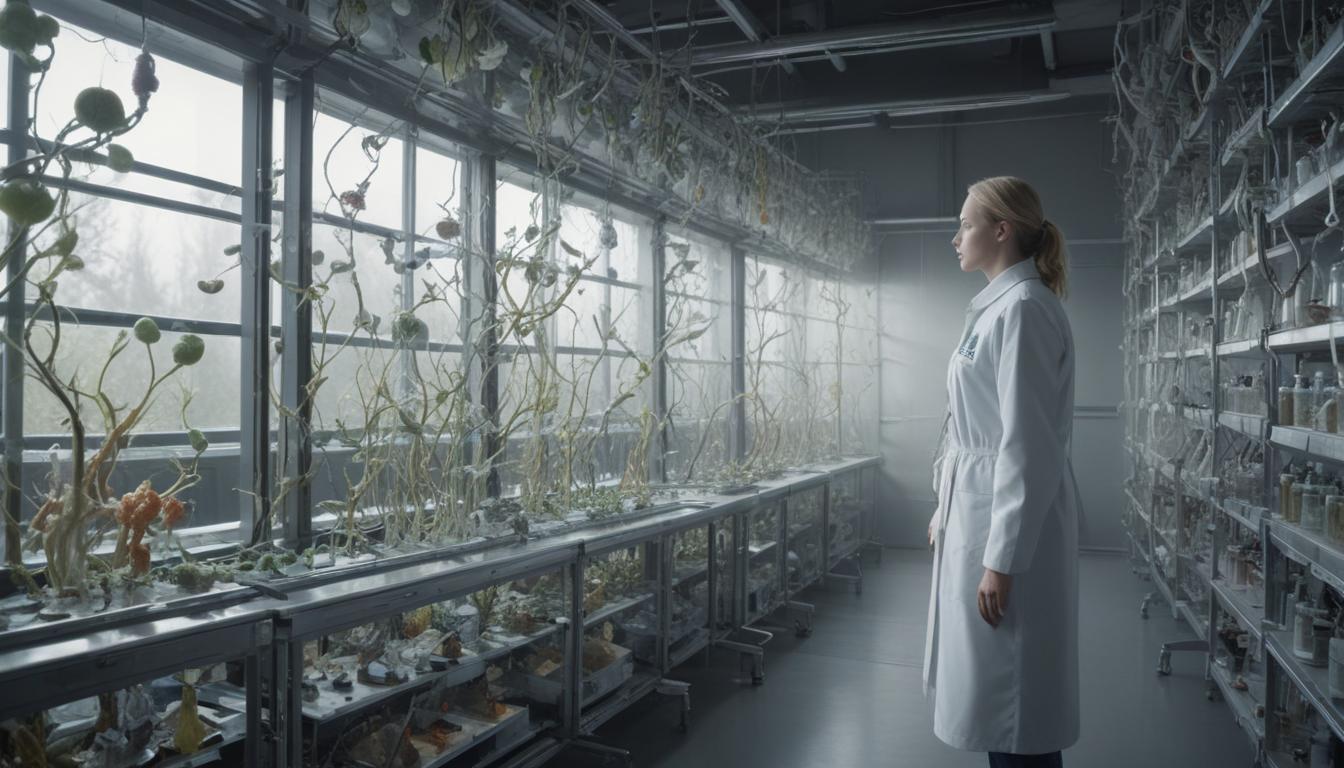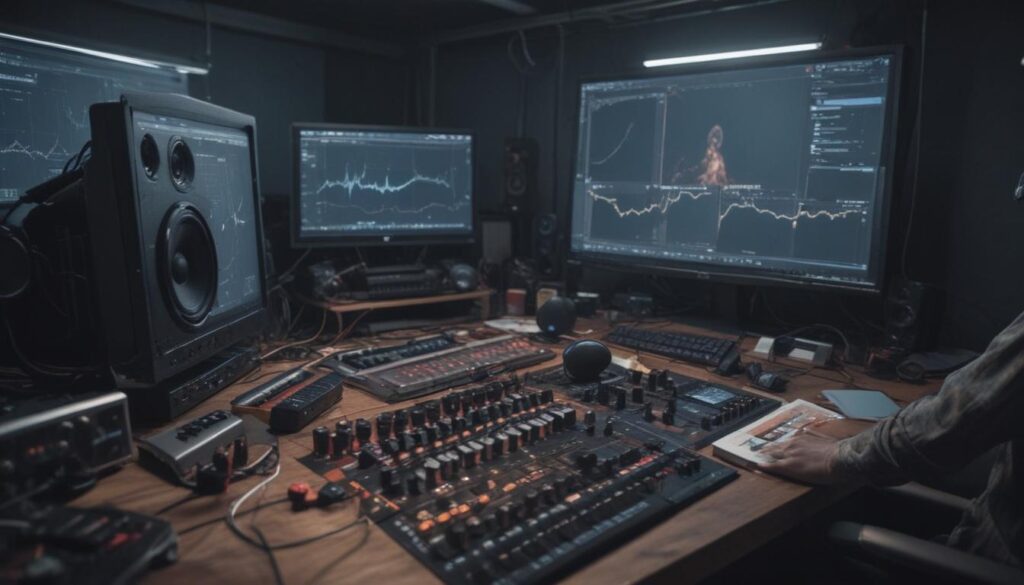Now Reading: Synthetic Biology Engineering Life
- 01
Synthetic Biology Engineering Life
Synthetic Biology Engineering Life

Synthetic Biology Designing New Life
Are you watching the news and feeling overwhelmed by the scale of the world’s problems? From climate change and plastic-filled oceans to incurable diseases and food insecurity, the challenges can seem insurmountable. You may have heard whispers of futuristic solutions, but complex terms like “synthetic biology” can sound intimidating and far-fetched, leaving you more confused than hopeful.
What if we told you there was a way to tackle these issues at the most fundamental level? Imagine programming a living cell just like we program a computer, instructing it to fight disease, create clean fuel, or produce sustainable materials. This isn’t science fiction. This is the groundbreaking reality of synthetic biology, a field that empowers us to design life itself to solve our biggest problems. Let’s demystify this incredible science and explore how it is building a better, more sustainable future for all of us.
What Exactly Is Synthetic Biology
At its core, synthetic biology is an area of science that involves redesigning organisms for useful purposes by engineering them to have new abilities. Think of it as the intersection of biology and engineering. We are applying the principles of design, construction, and testing to the building blocks of life.
Beyond Traditional Genetic Engineering
You have probably heard of genetic engineering, which has been around for decades. Traditionally, that involved cutting and pasting a single existing gene from one organism to another. It was like taking a single, useful sentence from one book and adding it to another.
Synthetic biology is a giant leap forward. Instead of just moving sentences, scientists are now writing entirely new chapters. They design and synthesize long stretches of DNA from scratch to create new biological functions or even entire biological systems that do not exist in nature. It represents a fundamental shift from simply modifying life to truly designing it.
The Building Blocks of Life as a Toolkit
The best way to understand synthetic biology is to think of DNA as the software that runs a living cell. Synthetic biologists are the programmers writing new code for that software. They work with standardized biological parts, sometimes called BioBricks, which are individual pieces of DNA with known functions.
Just as an electrical engineer uses standard resistors, capacitors, and processors to build a device, a synthetic biologist can select and assemble these BioBricks to create a new genetic circuit. This circuit can then be inserted into a simple organism, like bacteria or yeast, giving it a completely new purpose.
How Does Synthetic Biology Work
Because it is an engineering discipline, synthetic biology follows a systematic and iterative process. The goal is to make biology more predictable, reliable, and efficient. This is often achieved through a core workflow known as the Design Build Test Learn cycle.
The Design Build Test Learn Cycle
This cycle allows scientists to refine their biological creations until they work exactly as intended.
Design Phase
First, scientists use sophisticated computer-aided design (CAD) software to map out a new genetic circuit. They plan which biological parts are needed and how they should be assembled to achieve a specific goal, such as producing a valuable medicine or detecting a toxin in water.
Build Phase
Next, using advanced DNA synthesis technology, the designed genetic sequence is physically constructed, essentially “printing” a new piece of DNA. This custom-built genetic program is then introduced into a host organism, turning that simple cell into a microscopic factory.
Test and Learn Phase
In the final phase, the engineered cells are tested to see if they perform as designed. Do they produce the target molecule? Do they change color in the presence of a pollutant? The results, whether successful or not, provide crucial data. This information is used to “learn” and refine the initial design, starting the cycle over again until the biological system is fully optimized.

Real World Applications Transforming Our Future
The true power of synthetic biology lies in its incredible real-world applications. This technology is not just theoretical; it is already delivering solutions that are changing lives and protecting our planet.
Revolutionizing Medicine and Healthcare
Synthetic biology is opening new frontiers in medicine. Scientists are engineering immune cells to recognize and destroy cancer cells with incredible precision. They are creating “living diagnostics”—probiotic bacteria that can live in your gut and detect the early signs of disease. Furthermore, essential medicines like insulin and the antimalarial drug artemisinin are now brewed in giant vats of engineered yeast, making them cheaper and more accessible worldwide.
Greener Solutions for a Sustainable Planet
In the fight against climate change, synthetic biology offers powerful tools. Researchers are engineering algae that can capture CO2 from the atmosphere and convert it directly into clean biofuel. Others are programming microbes to consume plastic waste or to break down toxic oil spills in the ocean. We can even create bacteria that eat industrial waste and convert it into high-quality, biodegradable plastics.
The Future of Food and Agriculture
This field is set to transform how we feed the world. Scientists are developing crops that can produce their own nitrogen fertilizer from the air, drastically reducing chemical runoff into our rivers. The technology is also behind animal-free food products, where engineered yeast can produce real milk proteins to make ice cream and cheese without a single cow involved.
Addressing the Ethical Questions
With any powerful new technology, it is natural and necessary to ask important questions about safety and ethics. The ability to design life carries immense responsibility.
Safety and Security Concerns
The scientific community and regulatory bodies are actively discussing potential risks. These include the accidental release of an engineered organism into the environment and the potential for the technology to be misused. These are valid concerns that are taken very seriously by researchers in the field.
The Importance of Responsible Innovation
To address these concerns, the field of synthetic biology is being built on a foundation of responsible innovation. Researchers are designing safety features directly into their organisms, such as “kill switches” that prevent them from surviving outside the lab. Open discussion, transparent research, and robust government oversight are all critical components ensuring this technology is developed for the good of humanity.
The Future is Biological
Synthetic biology is more than just a fascinating new area of science. It is rapidly becoming one of the most important engineering disciplines of the 21st century. By harnessing the power of nature and combining it with human ingenuity, we are gaining an unprecedented ability to build a healthier, cleaner, and more equitable world. From medicine to manufacturing, the age of biological design has arrived.


































